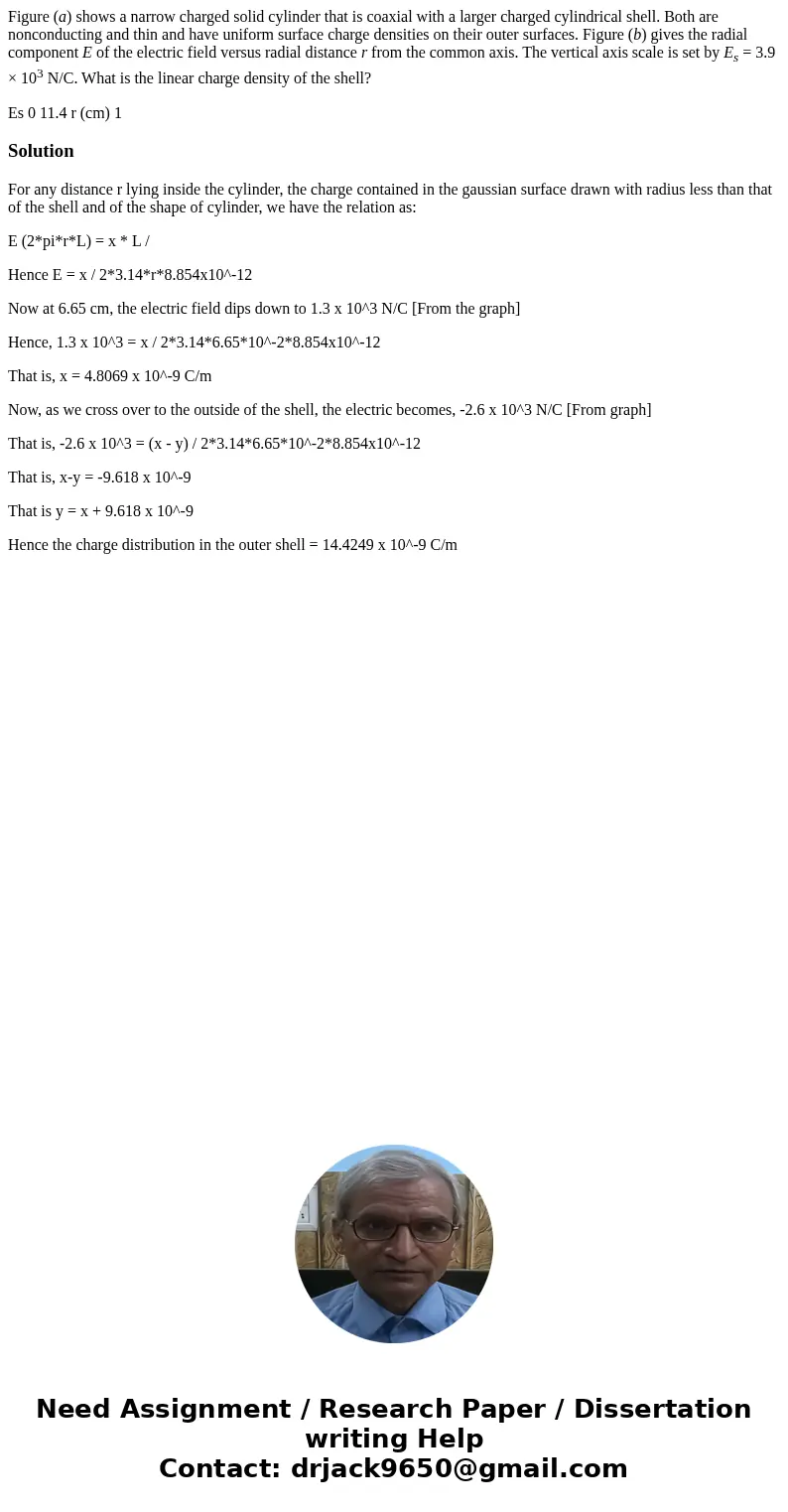Figure a shows a narrow charged solid cylinder that is coaxi
Figure (a) shows a narrow charged solid cylinder that is coaxial with a larger charged cylindrical shell. Both are nonconducting and thin and have uniform surface charge densities on their outer surfaces. Figure (b) gives the radial component E of the electric field versus radial distance r from the common axis. The vertical axis scale is set by Es = 3.9 × 103 N/C. What is the linear charge density of the shell?
Es 0 11.4 r (cm) 1Solution
For any distance r lying inside the cylinder, the charge contained in the gaussian surface drawn with radius less than that of the shell and of the shape of cylinder, we have the relation as:
E (2*pi*r*L) = x * L /
Hence E = x / 2*3.14*r*8.854x10^-12
Now at 6.65 cm, the electric field dips down to 1.3 x 10^3 N/C [From the graph]
Hence, 1.3 x 10^3 = x / 2*3.14*6.65*10^-2*8.854x10^-12
That is, x = 4.8069 x 10^-9 C/m
Now, as we cross over to the outside of the shell, the electric becomes, -2.6 x 10^3 N/C [From graph]
That is, -2.6 x 10^3 = (x - y) / 2*3.14*6.65*10^-2*8.854x10^-12
That is, x-y = -9.618 x 10^-9
That is y = x + 9.618 x 10^-9
Hence the charge distribution in the outer shell = 14.4249 x 10^-9 C/m

 Homework Sourse
Homework Sourse